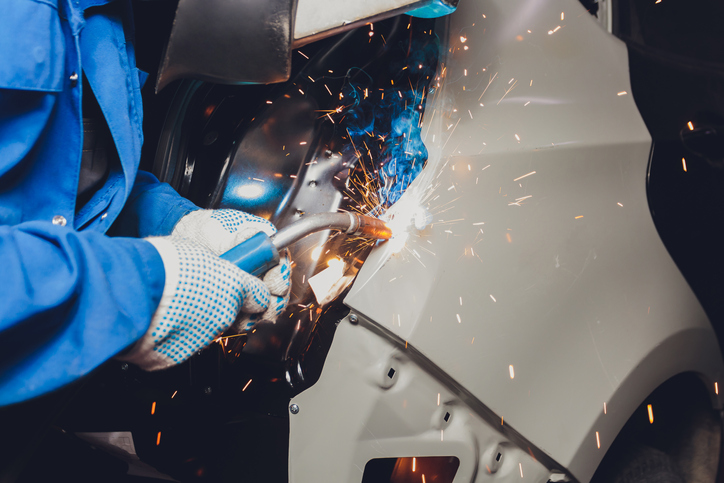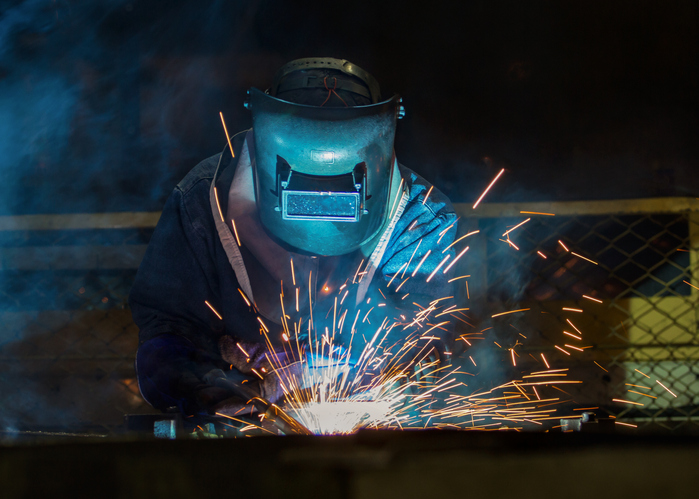Completing your training as an auto mechanic will provide you with the hands-on learning you’ll need to understand successful welding techniques, should you select welding from your many new career options. With a split of 40% classroom learning and 60% of the course supplying you with first-hand experience in the shop, you’ll be prepared to jump into your career with confidence.
Welding fundamentals is a crucial component of the curriculum, and your experienced instructors will guide you through the processes for various techniques. Some techniques will be used for quick repairs, while others will prepare you for more complex welding with specialized materials. Selecting a welding technique to use depends on the type of material you’re working with as the type of metal will make a difference in the welding process. Keep reading to learn about five welding techniques to practice during technician training.
1. MIG (Metal Inert Gas) Welding for Beginners
MIG welding is a technique that can be used to weld any common metals such as carbon steel, stainless steel, and aluminum. It’s a simple form of welding that can easily be used by beginners. This process involves a filler metal that is fed through the wand, and gas is expelled around it to protect from outside elements. This technique is generally foolproof, as it’s strong, affordable, and fast. The focus point you should pay attention to during automotive school for this technique is learning to get the balance right for the heat and wire speed in order to get the best weld with the least amount of distortion.
2. TIG (Tungsten Inert Gas) Welding for More Experienced Welders
TIG is a more precise form of welding when compared to MIG, and can take more practice to get used to. This technique doesn’t require a filler metal, and only uses the two metals being welded together. It’s a process that has become increasingly popular to use with motorcycles and custom cars, as the finished product is very visually appealing. Practicing this technique consistently is key to being able to successfully apply it to your work.

3. Stick Welding in Auto Mechanic School
Stick welding is also known as SMAW (Shielded Metal Arc Welding). This form of welding was created in the 1930s and used to be the most common method in every auto mechanic school. It continues to be updated and improved as new techniques emerge. This technique doesn’t create the cleanest welds or work the best on thin metals, so it’s best used on equipment repairs as it has no problem with rusty, dusty, or painted surfaces.
4. Arc Welding With Rod Materials
Arc welding is a technique that uses an electrode, which is a metal rod with a powered flux around it. When the electrode strikes an arc, it’s so hot that it melts the work material and the rod, adding additional material to the weld. During the weld, powder from the flux begins to form around the working area and needs to be chipped off and cleaned up when completed. This technique is best used for heavy materials, and having familiarity with rod materials and their penetrability will help the welding newbie excel quickly at this method.

5. Laser Beam Welding in the Automotive Industry
The laser beam welding method can be used on metals or thermoplastics and uses the laser beam as the heat source. This source provides a narrow and deep weld with high efficiency, ensuring that the surrounding area of the parts are unaffected while the edges of the two pieces are welded together. It’s a great technique for high volume welding applications, such as in the automotive industry.
Interested in completing auto mechanic training?
Contact ATC Cambridge today to learn more about our program!


